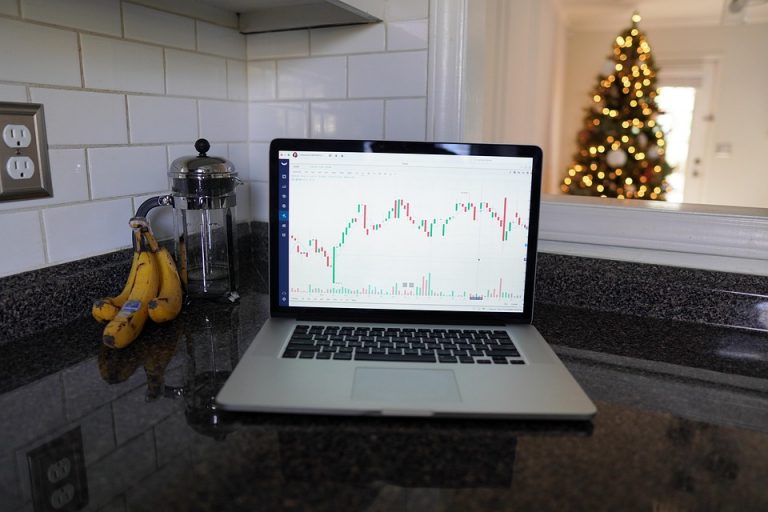Have you ever felt like you’re navigating a maze when it comes to trading? You’re not alone. Many traders wrestle with understanding the concepts of support and resistance. These key levels can feel elusive, but mastering them can significantly improve your trading strategy. Let’s dive into five actionable strategies that can help you harness the power of support and resistance trading.
Contents
What Are Support and Resistance?
Before we get into the strategies, let’s clarify what we mean by support and resistance.
- Support: This is a price level where a stock or asset tends to stop falling and may rebound. Think of it as a safety net.
- Resistance: Conversely, resistance is a price level where an asset struggles to rise above. It’s like a ceiling that the price often hits but rarely breaks through.
Understanding these concepts is crucial because they can indicate potential price movements. But how do you effectively incorporate them into your trading strategy? Let’s break it down.
Strategy 1: Use Trendlines
What Are Trendlines?
Trendlines are straight lines drawn on a chart to connect price points. They can help identify both support and resistance levels.
How to Implement
- Identify Highs and Lows: Start by marking the highest and lowest points on your chart.
- Draw the Line: Connect these points with a straight line. A rising trendline connects higher lows, while a falling trendline connects lower highs.
- Watch for Breakouts: When the price breaks through a trendline, it can signal a change in trend.
Pros and Cons
Pros:
- Visually represents price movements.
- Easy to understand for beginners.
Cons:
- Can be subjective; different traders may draw different lines.
- False breakouts can occur, leading to potential losses.
Example in Action
Let’s take a look at Apple Inc. (AAPL) over the past few months. By applying trendlines, traders could have identified key breakout points, enabling them to enter trades at optimal times.
Strategy 2: Identify Key Psychological Levels
What Are Psychological Levels?
Psychological levels are price points that often act as support or resistance because traders have a tendency to place buy or sell orders at these levels. Common psychological levels include whole numbers (like $50, $100, etc.).
How to Implement
- Look for Round Numbers: Identify key levels that end in zeros, such as $50 or $100.
- Monitor Price Action: Pay attention to how the asset reacts when it approaches these levels. Do buyers step in at $50? Do sellers emerge at $100?
- Combine with Other Indicators: Use these levels alongside other technical indicators for more confirmation.
Pros and Cons
Pros:
- Often respected by the market.
- Provides clear entry and exit points.
Cons:
- Can be unpredictable; price may overshoot these levels.
- Requires constant monitoring of price action.
Example in Action
Consider Bitcoin (BTC) as it approaches the $30,000 mark. Many traders set buy orders just above this level, expecting it to act as support, which can create a self-fulfilling prophecy.
Strategy 3: Use Fibonacci Retracement
What Is Fibonacci Retracement?
Fibonacci retracement is a technical analysis tool that uses horizontal lines to indicate areas of support or resistance at the key Fibonacci levels before the price continues in the original direction.
How to Implement
- Identify the Swing High and Low: Look for the most recent significant price movement.
- Apply the Fibonacci Tool: Use a trading platform that offers the Fibonacci retracement tool to draw levels between the high and low.
- Watch for Reactions: Monitor how the price reacts at these levels (23.6%, 38.2%, 50%, 61.8%).
Pros and Cons
Pros:
- Provides multiple levels to consider.
- Widely used, making it more likely to influence market behavior.
Cons:
- Can be complex for beginners.
- May not always work in highly volatile markets.
Example in Action
In a recent analysis of Tesla (TSLA), applying Fibonacci retracement levels helped traders identify potential reversal points after a significant price drop, giving them a chance to enter at favorable prices.
Strategy 4: Combine Support and Resistance with Volume
Why Volume Matters
Volume measures the number of shares traded over a specific period. High volume at support or resistance levels can indicate the strength of those levels.
How to Implement
- Check Volume Indicators: Use volume charts to see how much trading activity occurs as the price approaches support or resistance.
- Look for Confirmation: A breakout accompanied by high volume is generally more reliable than one with low volume.
- Set Alerts: Use alerts on your trading platform to notify you when price approaches these levels with corresponding volume spikes.
Pros and Cons
Pros:
- Adds another layer of confirmation.
- Helps identify false breakouts.
Cons:
- Requires additional analysis.
- Volume can be misleading if not interpreted correctly.
Example in Action
If you noticed that Amazon (AMZN) was approaching a resistance level of $3,500 with significantly higher trading volume, it could indicate that a breakout is imminent, providing an opportunity for profit.
Strategy 5: Use Moving Averages as Dynamic Support and Resistance
What Are Moving Averages?
Moving averages smooth out price data to create a trend-following indicator. They can act as dynamic support and resistance levels.
How to Implement
- Choose Your Moving Average: Common choices include the 50-day and 200-day moving averages.
- Monitor Price Action: Watch how the price interacts with these moving averages. A bounce off the moving average can indicate support, while a rejection can signal resistance.
- Combine with Other Indicators: Use these moving averages in conjunction with other tools like RSI or MACD for a more robust analysis.
Pros and Cons
Pros:
- Provides a clear visual representation of trend direction.
- Can adapt to changing market conditions.
Cons:
- Lagging indicator; may not predict sudden price movements.
- Requires regular adjustments based on market conditions.
Example in Action
In the case of Microsoft (MSFT), traders who utilized a 50-day moving average could have identified a strong support level during a recent dip, allowing them to buy at a favorable price.
FAQs
1. What is the best way to identify support and resistance levels?
The best way is to combine multiple methods, such as trendlines, psychological levels, and Fibonacci retracement, for a comprehensive view.
2. How do I know when to enter a trade based on support and resistance?
Look for confirmation signals, such as price action or volume spikes, when the price approaches these levels.
3. Can support and resistance levels change over time?
Yes, they can change based on market conditions, news events, and trader behavior. Always be prepared to adjust your strategy accordingly.
4. Are there any tools to help identify support and resistance levels?
Yes, many trading platforms offer built-in tools for drawing support and resistance lines, as well as indicators like Fibonacci retracement and moving averages.
Conclusion
Mastering support and resistance trading is not just about recognizing levels; it’s about understanding market psychology and using various tools to make informed decisions. By implementing these five strategies—trendlines, psychological levels, Fibonacci retracement, volume analysis, and moving averages—you’ll be better equipped to navigate the complexities of trading.
And let’s be real: trading can be overwhelming, but with a solid grasp of support and resistance, you can approach the market with more confidence. Remember, continuous learning and adaptation are key to your success.
References
- Murphy, J. J. (1999). Technical Analysis of the Financial Markets. New York Institute of Finance. Link
- Pardo, R. (2010). The Evaluation and Optimization of Trading Strategies. Wiley. Link
- Elder, A. (1993). Trading for a Living. Wiley. Link








